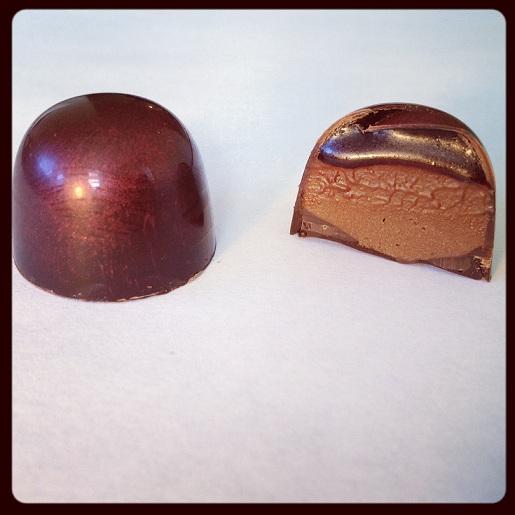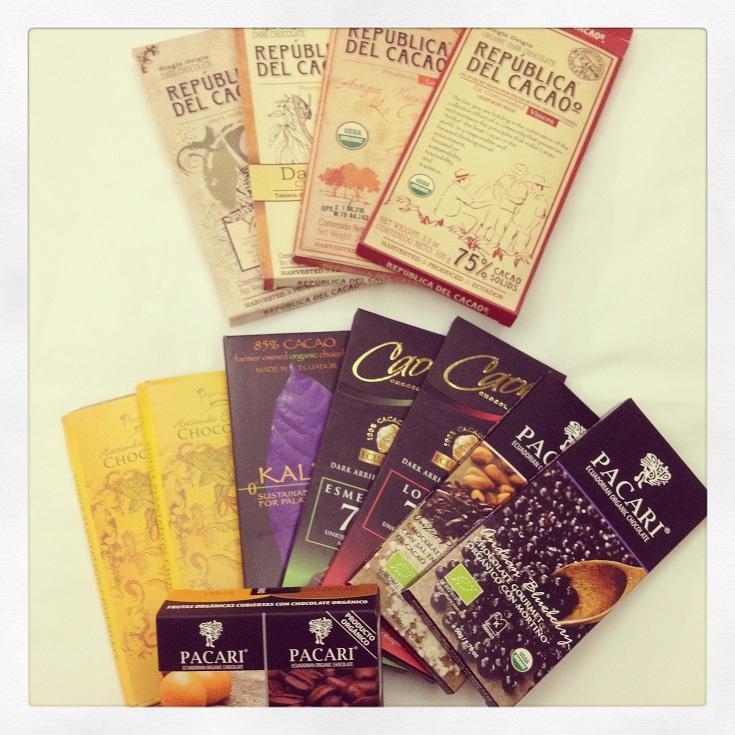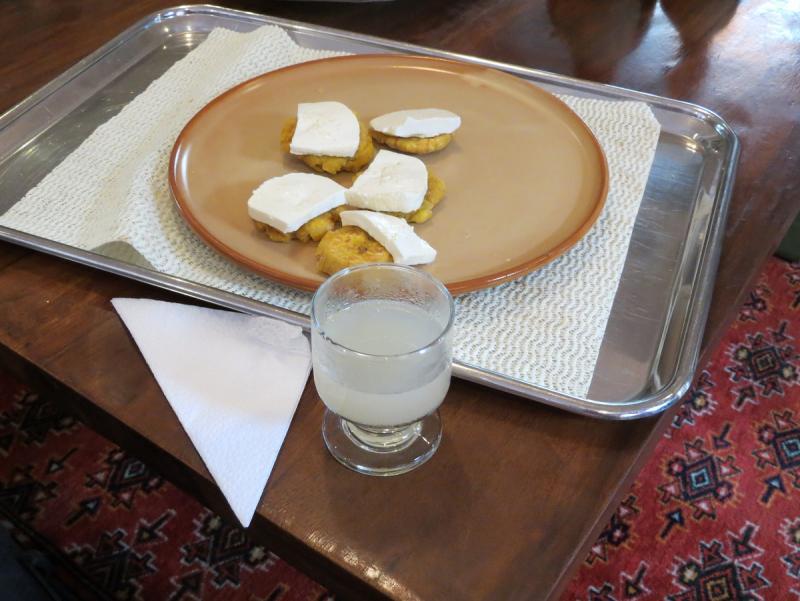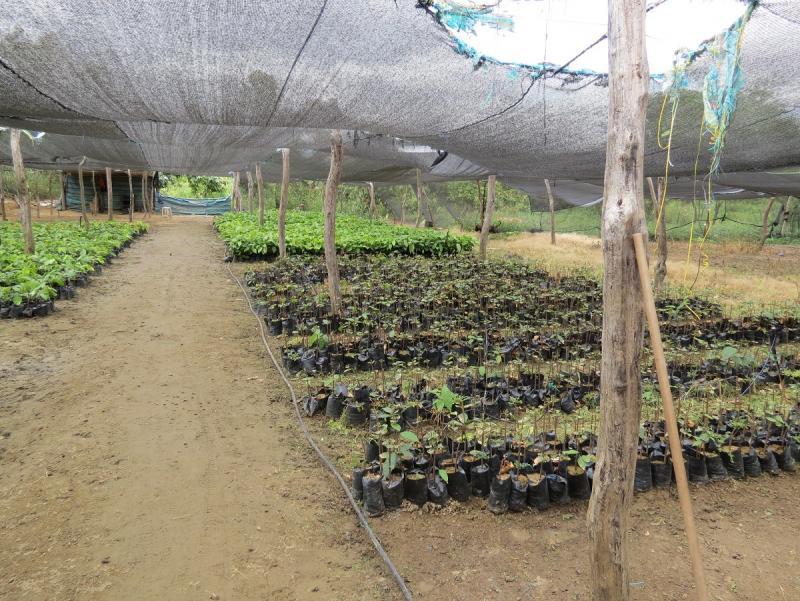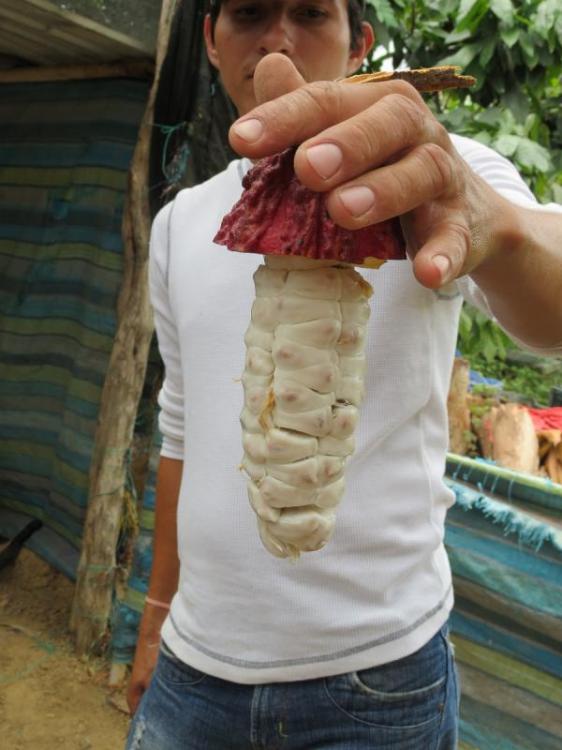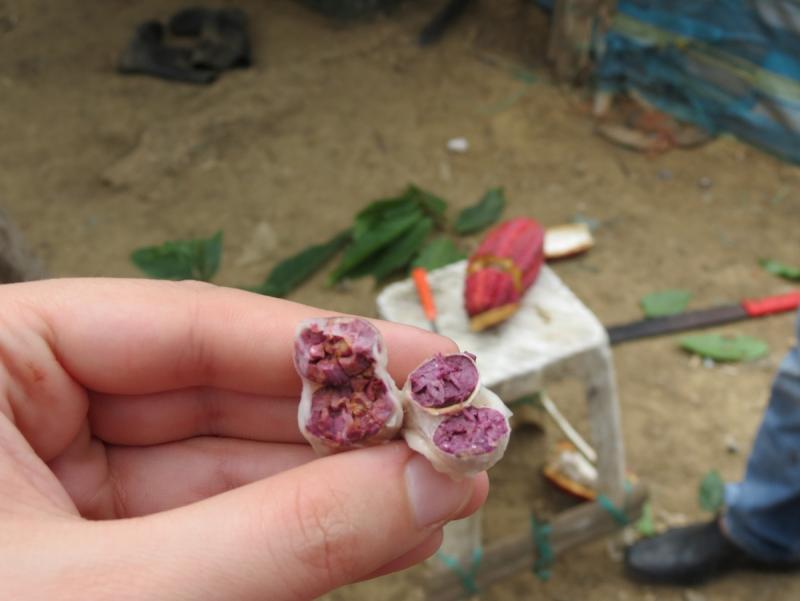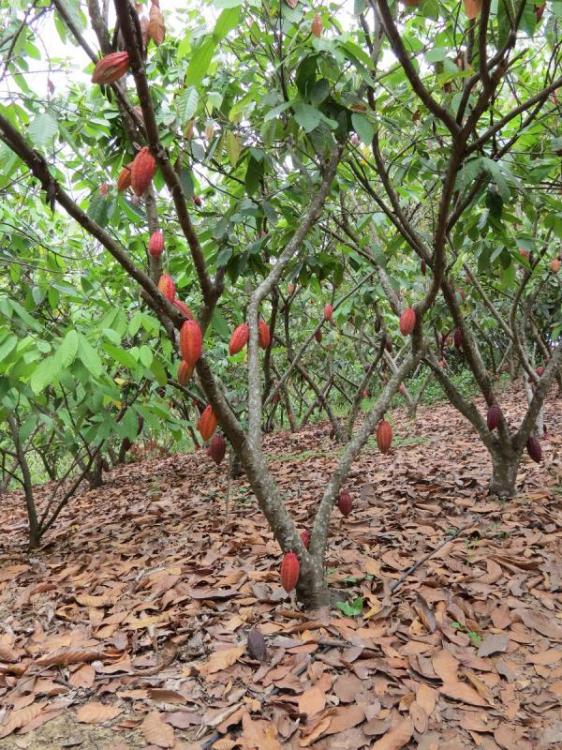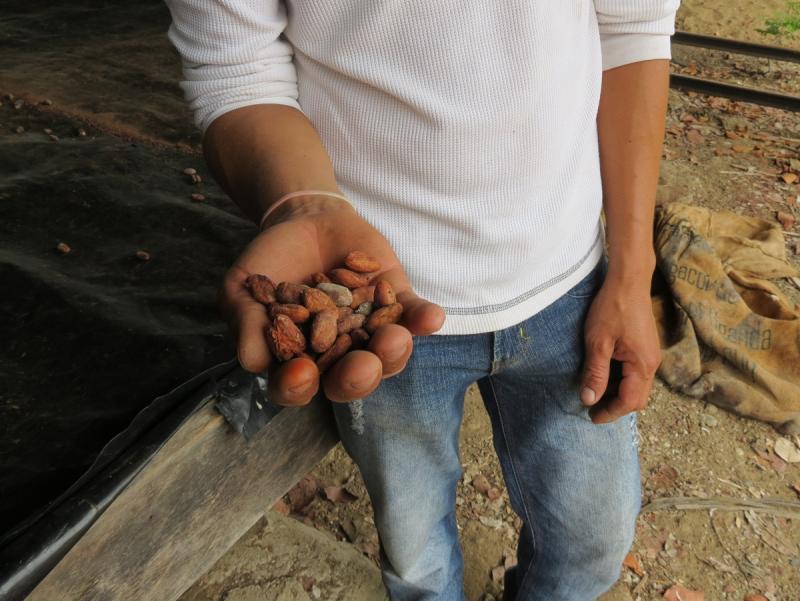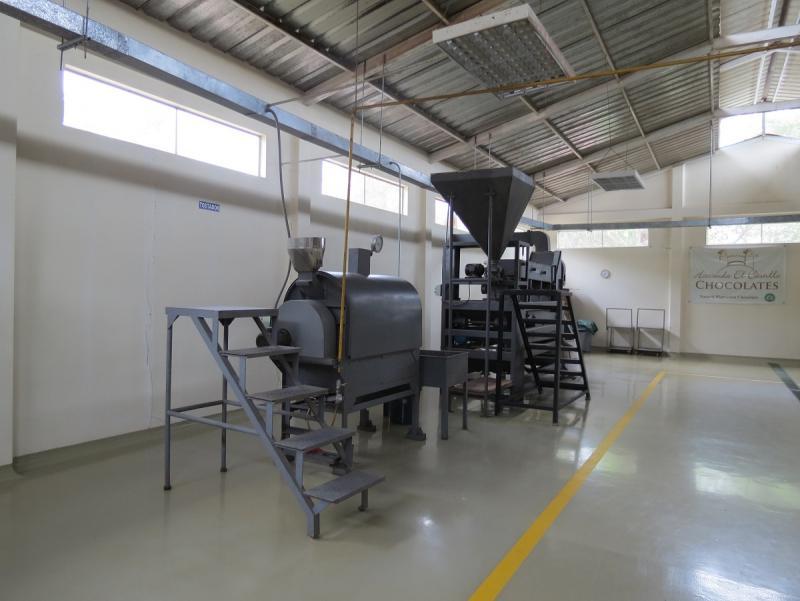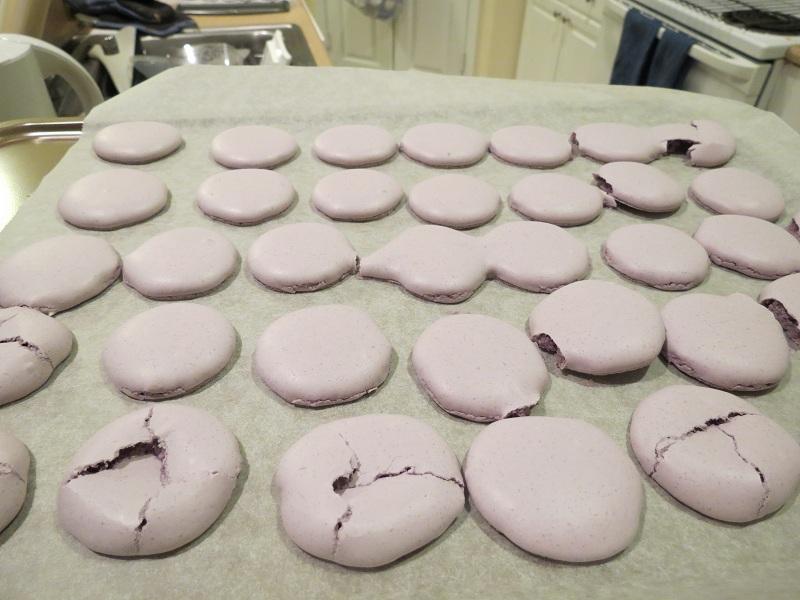
lironp
participating member-
Posts
142 -
Joined
-
Last visited
Content Type
Profiles
Forums
Store
Help Articles
Everything posted by lironp
-
In the course we didn't have time to let this set, so we actually piped the ganache into rosettes. After now making this twice at home, I have 2 tips: Work very quickly to spread the filling after whipping, it hardens very quickly. Refrigerate before cutting with a guitar (or knife), which is what the Chef told us we would have to do although I had to see it to believe it! Could anyone else reading this thread and who wants the recipe please PM me with the request, I have completely lost track of who I have sent the recipe to...
-
And Kerry's suggestion is a good one to make sure you get enough crystallization.
-
Do you blend the ganache before piping it? That helps crystallize the chocolate, which eventually thickens it. From my experience, you can pretty much get any ratio of cream:chocolate to thicken enough to mold (and sometimes even for dipped chocolates), depending on how crystallized the ganache is. What temperature is the ganache in when you pipe it? That's another factor in how it will set.
-
Hibiscus caramel with Ghana milk chocolate-honey ganache. I couldn't get decent lighting, but the hibiscus caramel is actually a dark pink. I just love that flavor, and have recently made a hibiscus PDF, hibiscus ganache and now this.
-
I think I have covered everyone in this thread and PMs, if I've forgotten to send the recipe to anyone, feel free to PM me again and I'll send the recipe, sorry for any delays!
-
This subject has ben on my mind for 2 years now, and I have finally cracked it. I loved Jean Paul Hevins salted caramel mousse, and La maison du chocolat's milk chocolate caramel mousse, and have racked my brains on how they get this result- this is not a buttercream (too tasty for that). No frappe/ egg whites in the ingredients list for la maison de chocolat's chocolates (and not that texture really). Can't just be a regular whipped ganache, since it's shelf life is pretty decent, and it took a while to dry out... Yesterday I finished Frederic Hawecker's chocolate and confections course, in the Barry Calebaut chicago chocolate academy. One of the recipes we made, was an orange caramel ganache. At one point chef said that this ganache can be whipped and get a really good texture. Bells started ringing in my head- is this finally it??? Have I cracked the secret?? I asked if this was the technique for La maison's ganache. After he got over his surprise of someone knowing of that ganache, he went on to say that this technique is only used by La maison du chocolat, Patrick Roger and Jean Paul Hevin (as far as he knows), since it is pretty hard to cut. This is a caramel based ganache, with a relatively high butter content, that is whipped at exactly 14 degrees celsius. Before cutting with a guitar, it is refrigerated, since it is pretty soft, and even then it is very hard to cut without the corners breaking (which is why he said few people make this). After harrasing him enough, he was willing to leave out enough of that caramel ganache to whip later on (this wasn't originally in the course plan), and bingo!! After whipping it, we got the same texture from that orange chocolate mousse! That course was worth every penny I can PM the exact recipe, to anyone that is interested.
-
Visit to Cocoa Plantation in Ecuador
lironp replied to a topic in Central & South America: Cooking & Baking
Yes, I have them all, I bought one of each type, and then some after my first taste. They had a store in the airport, where I could get some more chocolate before going back home Before my next visit to Israel, I'll try to see if I can get my hands on their dark-milk chocolate for you! It was a 65% milk chocolate, which was amazing! -
Visit to Cocoa Plantation in Ecuador
lironp replied to a topic in Central & South America: Cooking & Baking
If only I'd known you were in Ecuador, I should have asked here before the trip! I did not know what you said about the sun grown vs. shade grown, in plantations that are shade drown, what provides the shade? Also, what is the difference between Belgium and German processing techniques? We tried the Kallari 85% which was very nice, though not as interesting as R de C in my opinion. We bought all of these bars in a supermarket, so I just bought what they had- didn't see Valdivian, I'm sorry to have missed those both. The Pacari we bought was pretty bad, I don't know if it was just the types we bought, or is that their general quality? In any case, I was happy to see so many producers in Ecuador, and not just plantations. -
Visit to Cocoa Plantation in Ecuador On my recent trip to Galapagos Islands in Ecuador, we stayed for a day in Guayaquil, in order to tour a cocoa plantation and small factory- "Hacienda El Castillo". They manufactur the chocolate- from the cocoa trees to bar, solely in this plantation. We started in the main house, where we drank some cocoa juice, made from the pulp surrounding the cocoa beans- very sweet, but delicious: We saw cocoa trees in various stages of growth. In Ecuador, the cocoa variety that is grown is called "Arriba"/"Nacional". Since this pure variety doesn't produce many pods, they use a clone "CCN51"- a hybrid of trinitario and Nacional Inside of a cocoa pod: Fresh beans from 2 pods- 1 pure nacional (the darker), and one CCN51 cocoa tree Sun Dried and fermented beans: They mostly dry their beans in the sun, but if it is rainy, they have a gas heater to dry them. They claim there is no impact on the final flavor of the chocolate (I don't know how true that is), but there was a very heavy gas smell The small factory and their website: http://www.haciendaelcastillo.ec/home.php They produce 50%, 70% and 100% chocolate in the factory. After tasting the finished chocolates, we were a bit disappointed- the 50% was very very sweet, the 70% was just an average chocolate, not very special, and in my opinion not very good (The 2 left bars in the picture below). I bought a bar to bring to the conference in April, to hear some other people's opinion. Eventually, we went to a supermarket and bought some chocolates, that are produced in Ecuador, from cocoa grown in Ecuador: What really stood out (in price as well- ~$8-9 per bar), was the Republica del cacoa chocolate. They use only the pure nacional type, and not the clone. They had bars from severel areas in Ecuador which were incredible, and my favorite was a dark-milk chocolate- 65% milk chocolate- where you could taste the high quality dark chocolate, with some milk creaminess.
-
I make a Guiness caramel adapted from William Curley's orange balsamic caramel: 150 ml guiness 90 gr whipping cream 300 gr caster sugar 40 gr glucose 100 gr unsalted butter 100 gr salted butter Caramelize sugar and glucose to a dark amber. Add warm cream and butter, cook to 110 celsius. Add warm guiness, and cook to 107. I want to try and replace some of the sugar with muscovado sugar, and see how that turns out as well
-
PLANNING: 2013 Candy and Confection Workshop, April 27-28
lironp replied to a topic in Pastry & Baking
Any females interested in sharing a room for the conference? I currently have a 2 queens room booked if anyone is interested. -
PLANNING: 2013 Candy and Confection Workshop, April 27-28
lironp replied to a topic in Pastry & Baking
I'm in for Saturday dinner! -
I blend all of my ganaches with a hand blender, or make them in a food processor from the start, the difference in texture is incredible, and totally worth the effort in my opinion. If you do that, then I think Valrhona's method doesn't have any added value- it is supposed to create a better emulsion, but I think that if you use the blender at the end, it really doesn't matter how you created your ganache (as long as you just add alcohol and essential oils after it has cooled down a bit, so they won't evaporate), the result will be the same. When blending with a hand blender, you can really see the ganache emulsify and change texture to something like mayonnaise, and this results in a much smoother and creamier texture. In my experience, if I don't do that, then within a few days, the ganache starts getting more dry and grainy. You can always judge of a chocolatier has done this by seeing your teeth marks in the ganache after you have bitten into a chocolate.
-
Steve- if you want I can send you the apple/calvados buttercream recipe we got in my course in lenotre- I loved its texture, and it lasted for quite a while (no condensed milk in it)
-
I asked him about that in the course I took with him- He said that he found that to be true only for one type of inverted sugar he had worked with that had been inverted with some sort of chemical, (that is not really available to purchase), instead of the traditional way (which is what confectioners usually buy). I don't remember the details of the whole explanation, or the differences between the sugars, but at the end he explained that there is no problem boiling the invert sugar that we usually buy, and the one we used in the course.
-
Wow, that's the best looking tiramisu I've seen!
-
Those are beautiful! Where did you get the book from? I haven't managed to find it on amazon..
-
PLANNING: 2013 Candy and Confection Workshop, April 27-28
lironp replied to a topic in Pastry & Baking
I'll be there as well, and would probably like to share a room if that works out, why is it still so long away? -
Ruth, those look perfect!
-
Wow! Very impressive!
-
It's nice to know I'm not alone! I have 15 lbs of almond flour on the way, I will not be beaten
-
-
Steve- everything looks amazing!!! My favorite is the passion fruit heart, I'm a sucker for pink
-
Those look just perfect
-
I'm using both the dome molds like in Mette's picture, and diamond ones like yours. I tried some of these molds again, this time with a diferent luster dust that did adhere, however without applying a layer of cocoa butter before- they turned out shiny, but definitely not as shiny as before, I guess I need to decide if it's worth the extra effort...

